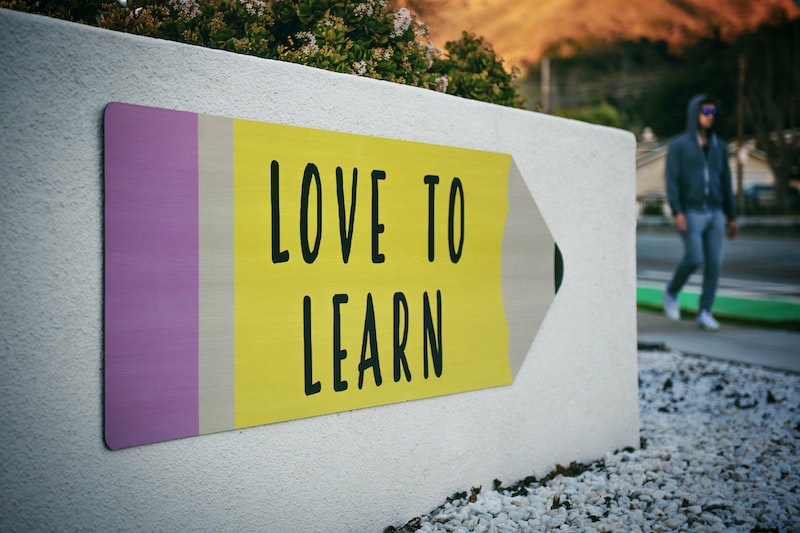Teacher training and professional development are vital components of the education system, ensuring that educators stay updated with the latest teaching methodologies and acquire new skills to enhance student learning. In today’s rapidly evolving world, innovative approaches to teacher training have become increasingly important. Let’s explore some exciting strategies that are revolutionizing the field.
One groundbreaking approach is the integration of technology into teacher training programs. By incorporating digital tools and platforms, educators can access a wealth of resources and collaborate with colleagues worldwide. Online courses and webinars provide flexible learning opportunities, allowing teachers to engage in professional development at their own pace and convenience. Additionally, virtual reality simulations offer immersive experiences where educators can practice various teaching techniques in realistic settings, honing their skills and building confidence.
Another innovative approach is the concept of micro-credentialing. Rather than traditional one-size-fits-all professional development, micro-credentials focus on specific skills or competencies. Teachers can earn badges or certifications by demonstrating mastery in these areas, such as using project-based learning or integrating technology effectively. This personalized approach allows educators to tailor their professional development to their unique needs and interests, fostering continuous growth and improvement.
Furthermore, collaborative communities of practice are transforming teacher training. These communities bring together educators from different schools and regions to share ideas, best practices, and resources. Through online forums, social media groups, and professional networks, teachers can connect with like-minded individuals, engage in meaningful discussions, and learn from each other’s experiences. This collaborative environment fosters a sense of camaraderie and support, encouraging ongoing professional growth.
Additionally, mentorship programs play a crucial role in innovative teacher training. Experienced educators can serve as mentors, providing guidance, feedback, and support to novice teachers. By pairing experienced and aspiring teachers, mentorship programs create a nurturing environment for professional development. Mentors offer valuable insights, share effective strategies, and help new teachers navigate the challenges of the classroom. This personalized guidance accelerates the growth and development of educators, ultimately benefiting student achievement.
In conclusion, innovative approaches to teacher training and professional development are revolutionizing the field of education. By embracing technology, adopting micro-credentialing, fostering collaborative communities, and implementing mentorship programs, educators can enhance their skills, stay abreast of current trends, and deliver the best possible education to today’s students. These innovative strategies empower teachers to create engaging and impactful learning environments, ultimately shaping the future of education.
Gamification and Experiential Learning in Teacher Training
Are you ready to level up your teaching skills? Imagine a training experience that feels less like work and more like play. That’s where gamification and experiential learning come into the picture, revolutionizing teacher training in exciting new ways. In this article, we’ll explore the power of gamification and experiential learning, and how they can transform the landscape of professional development for educators.
So, what exactly is gamification? It’s the art of integrating game elements into non-game contexts to enhance engagement and motivation. Just like games captivate players with challenges, rewards, and friendly competition, gamification brings these elements into the realm of teacher training. By incorporating game mechanics such as points, badges, leaderboards, and quests, educators can immerse themselves in an interactive and stimulating learning environment.
Experiential learning, on the other hand, emphasizes hands-on experiences and reflection. It’s all about learning by doing. In teacher training, this means moving away from traditional lecture-style sessions towards more active and participatory approaches. Educators engage in real-world scenarios, collaborate with peers, and reflect on their experiences, fostering deeper understanding and practical application of concepts.
Combining gamification and experiential learning creates a powerful synergy. Picture this: teachers embarking on a virtual quest where they must solve educational challenges, earn badges for completing tasks, and climb the leaderboard by demonstrating their knowledge and skills. This immersive experience not only makes learning fun but also sparks healthy competition among educators, fueling their motivation to excel.

The impact of gamification and experiential learning in teacher training extends beyond mere enjoyment. It enhances knowledge retention, encourages critical thinking, and develops problem-solving skills. By applying learned concepts in realistic scenarios, educators gain confidence in their abilities and are better prepared to navigate the complexities of the classroom.
In conclusion, gamification and experiential learning have the potential to revolutionize teacher training. By infusing playfulness, interactivity, and real-world experiences into professional development programs, educators can level up their skills in an engaging and effective manner. So, why settle for traditional training methods when you can embark on an exciting educational adventure? It’s time to gamify teacher training and unlock a world of possibilities.
Collaborative Models for Teacher Professional Development
Have you ever wondered how teachers continuously improve their skills and stay updated with the latest teaching methodologies? The answer lies in collaborative models for teacher professional development. These models are designed to foster collaboration among educators, allowing them to share knowledge, exchange ideas, and grow together.
In the realm of education, collaboration is key. Teachers who engage in collaborative professional development have the opportunity to learn from one another’s experiences, gain fresh perspectives, and develop innovative teaching strategies. This type of learning is far more effective than traditional methods that rely solely on individual efforts.
One popular collaborative model is the professional learning community (PLC). In a PLC, teachers come together to focus on a specific area of improvement, such as student engagement or assessment techniques. Through regular meetings, they discuss challenges, share best practices, and collectively work towards enhancing their teaching skills. This collaborative approach creates a supportive environment where educators can learn from each other’s successes and failures.
Another effective model is the lesson study. Originating from Japan, this model involves a group of teachers jointly planning, observing, and analyzing a lesson. Each teacher takes turns leading the lesson while others observe and provide feedback. The goal is to refine teaching techniques and improve student outcomes through reflective practice. Lesson study promotes deep collaboration and cultivates a culture of continuous improvement within schools.
Technology has also revolutionized teacher professional development through online platforms and communities. Educators can now connect with colleagues from around the world, access resources, and participate in virtual workshops and webinars. Online collaboration opens up endless opportunities for teachers to expand their knowledge and gain diverse perspectives without geographical limitations.
In conclusion, collaborative models for teacher professional development have proven to be highly effective in promoting continuous growth and improvement among educators. By fostering collaboration, these models create an environment where teachers can learn from one another, share ideas, and collectively enhance their teaching practices. Whether through professional learning communities, lesson studies, or online platforms, collaboration plays a pivotal role in shaping the future of education. So let’s embrace collaborative models and empower teachers to thrive in their professional journey.
Personalized Learning and Differentiated Instruction for Teachers
Are you ready to embark on an exciting journey in education? Picture this: a classroom where each student’s unique strengths, weaknesses, and learning styles are not only acknowledged but celebrated. Welcome to the world of personalized learning and differentiated instruction for teachers.
So, what exactly is personalized learning? It’s an innovative approach that tailors education to meet the individual needs and interests of students. No more one-size-fits-all lectures or cookie-cutter assignments. Instead, teachers become guides, helping students navigate their own learning paths. Imagine students setting goals, exploring topics they are passionate about, and engaging in projects that ignite their curiosity. With personalized learning, every child’s educational experience becomes a customized adventure.
Now, let’s dive into differentiated instruction. This teaching strategy recognizes that students learn in diverse ways and at different paces. Differentiation allows teachers to provide multiple avenues for students to access information, make sense of concepts, and demonstrate their understanding. By incorporating various instructional methods, materials, and assessments, teachers can cater to individual student needs while maintaining high expectations for all.
Think of it like a buffet. Instead of serving a single dish to everyone, teachers offer a variety of options. Some students may prefer visual aids, while others thrive with hands-on activities. By offering choices, teachers create an inclusive environment where students can shine in their own unique way.
As a teacher, embracing personalized learning and differentiated instruction opens up a world of possibilities. You become a facilitator, an architect of knowledge, and a champion of individual growth. Gone are the days of uniform lesson plans and rigid structures. You have the power to unleash the full potential of your students, allowing them to blossom into confident, self-directed learners.
So, are you ready to embark on this transformative journey? Personalized learning and differentiated instruction await, promising to revolutionize your teaching practice and leave a lasting impact on your students’ lives. Embrace the power of tailored education and watch as your classroom becomes a hub of amazement, engagement, and growth. The future of learning starts with you.
Mentoring and Coaching Programs for Teacher Development
Are you a teacher looking to enhance your professional growth? Mentoring and coaching programs for teacher development can be the key to unlocking your full potential in the classroom. These programs offer valuable support and guidance, helping teachers excel in their roles and create a positive learning environment for their students.
Imagine having a dedicated mentor who understands the challenges you face as an educator. With their wealth of experience and knowledge, they can provide personalized guidance tailored to your specific needs. Mentoring programs connect you with seasoned teachers who can offer insights, strategies, and practical advice to help you navigate through various teaching scenarios.
Coaching programs, on the other hand, focus on honing your skills and refining your instructional practices. Coaches work closely with you, observing your classroom activities and providing constructive feedback. They help you set goals, develop action plans, and implement effective teaching techniques. By regularly assessing your progress, coaches ensure that you continually improve and grow as an educator.
These mentoring and coaching programs not only benefit novice teachers but also experienced educators seeking to expand their horizons. No matter where you are in your teaching career, there’s always room for growth and improvement. Engaging in these programs allows you to stay up-to-date with the latest educational trends, research, and best practices.
Moreover, participating in mentoring and coaching programs helps foster a sense of community among teachers. It creates a space for collaboration, sharing ideas, and building relationships with colleagues who share similar aspirations. Being part of a supportive network boosts morale, reduces feelings of isolation, and encourages professional dialogue.
In conclusion, mentoring and coaching programs for teacher development offer invaluable support and guidance to educators. They provide personalized assistance, enhance instructional practices, and foster a collaborative environment. By investing in your professional growth through these programs, you can become an even more effective and inspirational teacher, positively impacting the lives of your students.
Integrating Social-Emotional Learning in Teacher Training
Are you ready to embark on a journey that can transform the way teachers connect with their students? In this article, we will explore the powerful concept of integrating social-emotional learning (SEL) in teacher training. By infusing SEL into the core of teacher preparation programs, we can equip educators with the skills and tools they need to foster emotional intelligence, empathy, and positive relationships in the classroom.

Imagine a classroom where students not only excel academically but also thrive emotionally and socially. That’s the vision behind integrating SEL in teacher training. It goes beyond traditional educational approaches by recognizing the importance of nurturing students’ social and emotional well-being alongside their intellectual growth.
When teachers undergo SEL-focused training, they gain a deeper understanding of how emotions and relationships impact students’ learning experiences. They learn how to create a safe and supportive classroom environment that encourages open communication, collaboration, and respect. These skills are essential for building strong teacher-student bonds that promote trust and engagement.
By incorporating SEL principles into teacher training, we empower educators to effectively manage and regulate their own emotions, modeling healthy behavior for their students. Teachers learn to recognize and address the diverse emotional needs of their students, enabling them to provide individualized support and guidance.
Furthermore, SEL training equips teachers with strategies to proactively address conflict, resolve issues, and foster a culture of inclusion and belonging. They learn techniques to promote empathy, active listening, and problem-solving skills among students, preparing them for success not just academically but also in life.
Integrating SEL in teacher training is like planting the seeds of emotional intelligence that will blossom in the classroom. It sets the stage for a positive and supportive learning environment where students feel valued, understood, and empowered to reach their full potential.
In conclusion, by embracing the integration of social-emotional learning in teacher training, we pave the way for a transformative educational experience. When teachers become equipped with SEL skills, they become catalysts for positive change in the lives of their students. Let’s embark on this journey together, unlocking the immense potential of SEL to shape the future generation.
Evaluation and Assessment of Innovative Teacher Training Methods
Are you tired of the same old teacher training methods that seem to yield minimal results? Do you wonder if there’s a more effective way to train educators and empower them with the necessary skills to inspire their students? Look no further than innovative teacher training methods. In this article, we will delve into the evaluation and assessment of these groundbreaking approaches, exploring how they can revolutionize the education landscape.
One of the key aspects of evaluating innovative teacher training methods is examining their impact on classroom dynamics. Traditional methods often focus solely on delivering content, leaving little room for practical application. However, innovative approaches prioritize hands-on experiences, allowing teachers to actively engage with new strategies and technologies. By assessing the effectiveness of these methods in terms of student engagement, collaboration, and critical thinking, we can gain insights into their true value.
Another important factor to consider is the scalability of innovative teacher training methods. While traditional methods may be effective on a small scale, they often struggle when implemented across an entire educational system. Innovative approaches, on the other hand, emphasize adaptability and flexibility. By evaluating their scalability, we can determine whether these methods have the potential to transform teaching practices on a larger scale.
Furthermore, it is crucial to assess the long-term impact of innovative teacher training methods. Traditional approaches often lack sustainability, with teachers reverting to their old habits once the training is over. However, innovative methods aim to create lasting change by fostering a culture of continuous improvement. By evaluating the retention of newly acquired skills and the long-term professional development opportunities offered, we can gauge the effectiveness of these methods in driving meaningful and sustained growth.
In conclusion, the evaluation and assessment of innovative teacher training methods are essential for reshaping education as we know it. By examining their impact on classroom dynamics, scalability, and long-term sustainability, we can identify the most effective approaches and equip educators with the tools they need to thrive. So, let’s embrace innovation and embark on a journey of transformative education together.












Leave a Reply